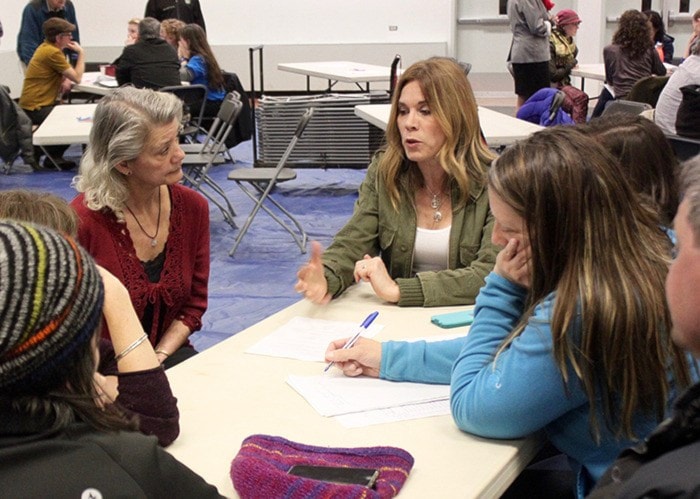Re: “Wildflower comments offensive”
I would like to offer a different perspective on Wildflower than the one expressed in Olindo Romeo Chiocca’s letter. Here’s how I see it.
I don’t think this is about exclusivity, segregation or the inappropriate use of tax dollars: those inflammatory extrapolations seem harsh and counterproductive. We all lament the reduced funds for public education and need to work together to find solutions that preserve the choices available within the public system.
Wildflower is different from standard elementary schools programs. A key element is the multi-year, multi-age grouping of students and the way students stay in the same class every year to, in a sense, “grow up” together.Like families with many children, Wildflower relies on the older children mentoring the younger children within the classroom and out on the playing field. The approach to education, the pedagogy, is different and that’s the point.
I’m not surprised that Wildflower parents are concerned about the proposed rearrangement of school populations. Their model could well be vulnerable to being assimilated into a larger process as an unintended consequence of co-location and contact. This happens all the time — consider indigenous cultures and languages. Closeness doesn’t always support diversity. And, isn’t it okay to get emotional when something we cherish is threatened? Like forests, water, or Jumbo Wild.
If you’d like a metaphor for the proposed co-location strategy, I’ll give it a go. Let’s say Wildflower students, staff and families are fish. The other students, staff and families are birds. A large flock of birds flies over to Central School and, given their numbers and systemic advantages, comes to dominate that environment.
What interspecies stresses might emerge? How does the smaller population of fish adapt? Do they start to fly? Maybe that’s okay because we have flying fish. What if they need to grow feathers to be accepted by the birds? Are they still fish? Have they become birds? Are they neither fish nor fowl? (Sorry, pretty corny, but I hope you get my point.) We could exhaust our wild fish stock and later wonder how we let it happen. Maybe let’s not do that here.
I am passionate that there be good educational options for children within the public system. I am grateful that School District 8 has fostered this diversity. It is a strength to have such options, and they help safeguard public education within our society. If these other school programs move into Central School with Wildflower, how do we know this beautiful experiment will survive? What if our little school of fish flies away?
Let’s listen to the concerns of Wildflower parents and teachers with kind hearts and open minds, realizing that we’re all in this together. On this Olindo and I agree: “Diversity and differences give us strength, new ideas, and a richness of life that we all benefit from.”
Ruth Beck, Nelson
